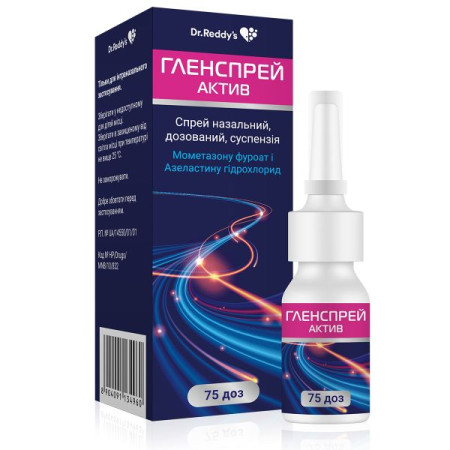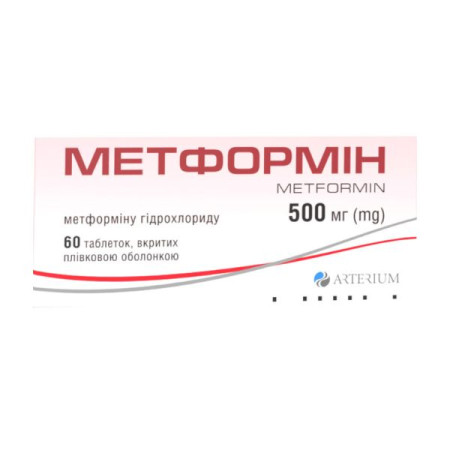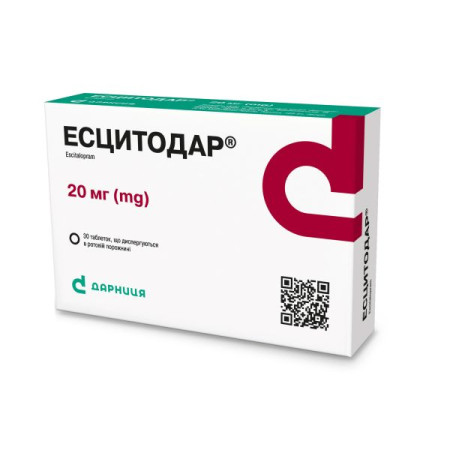Tricitron extra powder for oral solution sachet No. 10

Instructions for Tricitron extra powder for oral solution sachet No. 10
Composition
active ingredients: 1 sachet contains paracetamol 650 mg, pheniramine maleate 20 mg, phenylephrine hydrochloride 10 mg;
excipients: sucrose, anhydrous citric acid, sodium citrate dihydrate, silicon dioxide, lemon flavoring, tartrazine (E 102).
Dosage form
Powder for oral solution.
Main physical and chemical properties: White/almost white to light yellow powder with a lemon aroma. Soft lumps of more intense color are allowed. Solution: When dissolved in hot water, it forms a clear light yellow solution.
Pharmacotherapeutic group
Analgesics and antipyretics. Paracetamol, combinations without psycholeptics.
ATX code N02B E51.
Pharmacological properties
Pharmacodynamics.
A combination drug for the treatment of flu and cold symptoms.
It has antipyretic, decongestant, analgesic and antiallergic effects.
Paracetamol has analgesic, antipyretic and mild anti-inflammatory effects, which are mainly mediated by inhibition of prostaglandin synthesis in the central nervous system. It does not affect platelet function and hemostasis.
Phenylephrine hydrochloride is a sympathomimetic amine that acts primarily directly on alpha-adrenergic receptors. When used in therapeutic doses for nasal congestion, the drug has no significant stimulating effect on beta-adrenergic receptors of the heart and no significant effect on the central nervous system. It is a well-known nasal decongestant and acts by vasoconstriction, reducing swelling and hyperemia of the nasal mucosa.
Pheniramine maleate is an H1-receptor blocker, has an antiallergic effect, reduces the severity of local exudative manifestations, reduces lacrimation, rhinorrhea, itching in the eyes and nose. Reduction of general allergic symptoms associated with respiratory diseases, which exhibits a moderate sedative effect. It also has an antimuscarinic effect.
Pharmacokinetics.
After oral administration, paracetamol is rapidly and almost completely absorbed from the gastrointestinal tract. Maximum plasma concentrations are reached after 10-60 minutes.
Paracetamol is distributed in most body tissues. It crosses the placental barrier and is excreted in breast milk. At usual therapeutic doses, paracetamol binds to plasma proteins to a negligible extent, but the degree of binding increases with increasing concentration.
Paracetamol is mainly metabolized in the liver by two pathways: glucuronidation and sulfation. It is excreted in the urine, mainly as glucuronide and sulfate conjugates. The half-life is 1 to 3 hours.
The maximum concentration of pheniramine maleate in the blood plasma is reached after 1-2.5 hours; the half-life is 16-19 hours. 70-83% of the oral dose is excreted in the urine in unchanged form or in the form of metabolites.
Phenylephrine hydrochloride is absorbed from the gastrointestinal tract and undergoes presystemic metabolism by monoamine oxidase in the intestine and liver; thus, phenylephrine has a reduced bioavailability when administered orally. It is excreted in the urine almost entirely as the sulfate conjugate. Peak plasma concentrations are reached within 45 minutes to 2 hours, and the half-life is 2-3 hours.
Indication
Treating symptoms of flu and colds, including fever and chills, headache, runny nose, nasal and sinus congestion, sneezing, and body aches.
Contraindication
Hypersensitivity to any of the components of the drug. Severe cardiovascular diseases, severe liver and/or kidney dysfunction, congenital hyperbilirubinemia, arterial hypertension, acute pancreatitis, hyperthyroidism, pheochromocytoma, blood diseases (including severe anemia, leukopenia), thrombosis, thrombophlebitis, angle-closure glaucoma, glucose-6-phosphate dehydrogenase deficiency, severe forms of diabetes mellitus, alcoholism, prostatic hypertrophy with urinary retention, bladder neck obstruction, pyloroduodenal obstruction, bronchial asthma, epilepsy, sleep disorders. Concomitant treatment with monoamine oxidase inhibitors (MAO) and within 2 weeks after their discontinuation, tricyclic antidepressants, beta-blockers, other sympathomimetics.
Interaction with other medicinal products and other types of interactions
The drug interactions that each individual component of TRICITRON may involve are well known. There is no reason to assume that the use of these ingredients in combination would affect the drug interaction profile.
Paracetamol.
Hepatotoxic drugs may increase the likelihood of paracetamol accumulation and overdose. The risk of developing hepatotoxic effects of paracetamol may increase in patients receiving drugs that induce liver microsomal enzymes, such as barbiturates and antiepileptic drugs (phenytoin, phenobarbital, carbamazepine), and the antituberculosis drugs rifampicin and isoniazid.
Metoclopramide increases the rate of absorption of paracetamol and leads to an increase in its maximum plasma levels. Similarly, domperidone may increase the rate of absorption of paracetamol. Paracetamol may prolong the half-life of chloramphenicol.
Paracetamol may reduce the bioavailability of lamotrigine with a possible reduction in its effect due to possible induction of its metabolism in the liver.
The absorption of paracetamol may be reduced when co-administered with cholestyramine, but the reduction in absorption is insignificant if cholestyramine is administered 1 hour later.
Regular use of paracetamol simultaneously with zidovudine may lead to the development of neutropenia and an increased risk of liver damage. Paracetamol reduces the effectiveness of diuretics.
Probenecid affects the metabolism of paracetamol. The dose of paracetamol should be reduced in patients taking probenecid concomitantly.
The hepatotoxicity of paracetamol may be increased by prolonged or excessive alcohol consumption. Paracetamol may interfere with the results of phosphotungstic acid tests.
Pheniramine maleate
First-generation antihistamines, such as pheniramine maleate, may enhance the central nervous system depressant effects of certain other drugs (e.g., MAO inhibitors, tricyclic antidepressants, hypnotics and sedatives, neuroleptics, alcohol, antiparkinsonian drugs, barbiturates, anesthetics, tranquilizers, and narcotic analgesics). Pheniramine potentiates the anticholinergic effects of atropine, antispasmodics. Pheniramine maleate may also inhibit the effects of anticoagulants.
Phenylephrine hydrochloride.
The use of the drug is contraindicated in patients undergoing therapy with MAO inhibitors or in patients who have used MAO inhibitors within the last 2 weeks. Phenylephrine may potentiate the effects of MAO inhibitors and provoke a hypertensive crisis.
Concomitant use of phenylephrine with other sympathomimetic agents or tricyclic antidepressants (e.g. amitriptyline) may lead to an increased risk of cardiovascular side effects.
Phenylephrine may reduce the effectiveness of beta-blockers and other antihypertensive drugs (e.g. debrisoquine, guanethidine, reserpine, methyldopa). The risk of developing arterial hypertension and other cardiovascular side effects may increase.
Concomitant use of phenylephrine with digoxin and cardiac glycosides may increase the risk of heart rhythm disturbances or heart attack.
Concomitant use of phenylephrine with ergot alkaloids (ergotamine and methysergide) may increase the risk of developing ergotism.
Prolonged use of large doses during disulfiram treatment inhibits the disulfiram-alcohol reaction.
Application features
Concomitant use of other medicinal products containing paracetamol should be avoided due to the risk of severe liver damage in case of overdose. The drug is not recommended for use simultaneously with vasoconstrictors. Do not exceed the indicated doses.
When using the drug, you should avoid drinking alcoholic beverages, since ethyl alcohol, when taken simultaneously with paracetamol, can cause liver dysfunction.
The drug should be used with caution in patients with mild to moderate renal and/or hepatic impairment, acute hepatitis, severe hemolytic anemia, chronic malnutrition and dehydration, mild to moderate cardiovascular disease, mild to moderate diabetes mellitus, prostatic hypertrophy without urinary retention, as patients may be predisposed to developing urinary retention, stenosing peptic ulcer, Raynaud's disease, thyroid disease (except hyperthyroidism), chronic lung disease, as well as in patients taking medications that affect the liver and the elderly.
Patients should consult a doctor:
if they have breathing problems such as asthma, emphysema, or chronic bronchitis;
if symptoms do not improve within 5 days or if symptoms are accompanied by a high fever lasting more than 3 days, rash, or persistent headache;
regarding the possibility of using the drug in cases of impaired kidney and liver function.
These phenomena may be symptoms of a more serious illness.
Patients with severe infections such as sepsis, which are accompanied by a decrease in glutathione levels, are at increased risk of metabolic acidosis when taking paracetamol. Symptoms of metabolic acidosis include deep, rapid or difficult breathing, nausea, vomiting, loss of appetite. You should seek immediate medical attention if these symptoms occur.
1 sachet contains 19.4 g of sucrose, which should be taken into account by patients with diabetes mellitus. Patients with rare hereditary diseases such as fructose intolerance, glucose-galactose malabsorption or sucrase-isomaltase deficiency should not take this medicine.
1 sachet contains 7.4 mg sodium. Patients on a controlled sodium diet should take the sodium content into consideration.
The drug contains dye E 102, which may cause allergic reactions when used.
Reporting suspected adverse reactions to your doctor is important. This allows continued monitoring of the benefit/risk balance of the drug.
Use during pregnancy or breastfeeding
The use of the drug is not recommended during pregnancy or breastfeeding, as its safety in such cases has not been studied.
Pregnancy.
The results of epidemiological studies in pregnant women do not indicate any negative effects associated with oral administration of paracetamol at recommended doses.
The results of studies on the effects of paracetamol on reproductive function when administered orally do not indicate any signs of malformations or fetotoxicity. Paracetamol can be used during pregnancy after assessing the benefit/risk ratio.
There are currently no adequate reproductive studies or embryo/fetotoxicity data with pheniramine.
There are currently only limited data on the use of phenylephrine hydrochloride in pregnant women. Uterine vasoconstriction and decreased uterine blood flow associated with phenylephrine use may lead to fetal hypoxia. Phenylephrine hydrochloride should be avoided during pregnancy.
Breast-feeding.
Paracetamol is excreted in breast milk, but in amounts that are not clinically significant. Available published data do not provide grounds to recommend that breastfeeding should be discontinued while taking paracetamol.
There is insufficient information regarding the excretion of pheniramine into breast milk and the amount that could potentially enter the infant's body.
There is no information available on whether phenylephrine passes into breast milk. Phenylephrine should be avoided by women who are breastfeeding.
Fertility.
The effect of the drug on fertility has not been specifically studied. The results of non-clinical studies with paracetamol do not indicate any special hazard for fertility when used in therapeutic doses. Adequate reproductive toxicity studies in animals have not been conducted with phenylephrine and pheniramine.
Ability to influence reaction speed when driving vehicles or other mechanisms
The drug may cause drowsiness. Caution should be exercised when driving vehicles or operating machinery that requires concentration.
Method of administration and doses
Adults and children over 12 years of age should be prescribed 1 sachet every 4-6 hours (if necessary to relieve symptoms), but not more than 3-4 sachets per day. A single dose should not exceed 1 sachet. It is not recommended to use the drug for longer than 5 days. The contents of 1 sachet should be dissolved in a glass of boiled hot water (not boiling water) and drunk hot.
Patients with liver failure.
For patients with impaired liver function or Gilbert's syndrome, the dose should be reduced or the interval between doses should be increased.
Elderly patients: No dose adjustment is required for elderly patients.
Children.
Do not use the drug in children under 12 years of age.
Overdose
In case of an overdose of the drug, the symptoms caused by an overdose of paracetamol will be the most pronounced.
Symptoms caused by paracetamol overdose: hepatotoxic effect, in severe cases liver necrosis develops. Paracetamol overdose, including high total doses received over a long period, can cause analgesic-induced nephropathy with irreversible liver dysfunction.
Liver damage is possible in adults who have taken 10 g or more of paracetamol, and in children who have taken more than 150 mg/kg of body weight. In patients with risk factors: regular excessive use of ethanol, glutathione cachexia (digestive disorders, cystic fibrosis, HIV infection, cachexia), the use of 5 g or more of paracetamol can lead to liver damage.
With prolonged use of the drug in high doses, aplastic anemia, pancytopenia, agranulocytosis, neutropenia, leukopenia, thrombocytopenia may develop from the hematopoietic system. When taking large doses, from the central nervous system - dizziness, psychomotor agitation and disorientation; from the urinary system - nephrotoxicity (renal colic, interstitial nephritis, capillary necrosis).
Symptoms of paracetamol overdose, which appear in the first 24 hours, are as follows: pallor, nausea, vomiting and lack of appetite. The first sign of liver damage may be abdominal pain, which does not always appear in the first 24-48 hours, but may occur later, during a period of up to 4-6 days after taking the drug. Liver damage usually occurs a maximum of 72-96 hours after taking the drug. Abnormalities in glucose metabolism (hypoglycemia) and metabolic acidosis, hemorrhages may be observed. Acute renal failure with acute tubular necrosis may develop even in the absence of severe liver damage and manifest as severe back pain, hematuria, proteinuria. Cases of cardiac arrhythmias and pancreatitis have been reported.
Treatment: Paracetamol overdose requires immediate medical attention. Early administration of intravenous or oral N-acetylcysteine as an antidote to paracetamol, possibly gastric lavage and/or oral methionine may be beneficial for at least 48 hours after overdose.
Administration of activated charcoal and monitoring of respiration and circulation may be helpful. Diazepam may be used if convulsions occur.
Symptoms caused by overdose of pheniramine maleate and phenylephrine hydrochloride. Symptoms due to mutual potentiation of the parasympatholytic effect of the antihistamine and the sympathomimetic effect of phenylephrine hydrochloride include drowsiness, which may progress to excitation (especially in children) or depression of the central nervous system, visual disturbances, rash, nausea, vomiting, persistent headache, hyperhidrosis, nervousness, dizziness, tremor, insomnia, hyperreflexia, irritability, restlessness, circulatory disorders, arterial hypertension and bradycardia.
In severe cases, an overdose of phenylephrine may cause loss of consciousness, arrhythmias, coma, and seizures.
Cases of atropine-like "psychosis" have been reported following pheniramine overdose. Atropine-like symptoms may include: mydriasis, photophobia, dry skin and mucous membranes, hyperthermia, and intestinal atony.
Treatment. There is no specific antidote for antihistamine overdose. The patient should be given standard emergency care, including activated charcoal, saline laxative, and standard cardiorespiratory support. Stimulants should not be used; vasoconstrictors may be used to treat hypotension.
An intravenous alpha-receptor blocker can be used to reverse hypertensive effects.
Adverse reactions
The adverse reactions listed below may occur with the following frequency: very common (≥ 1/10), common (≥ 1/100, < 1/10), uncommon (≥ 1/1000, < 1/100), rare (≥ 1/10000, < 1/1000), very rare (< 1/10000), frequency unknown (cannot be estimated from the available data).
From the circulatory and lymphatic system: very rarely - thrombocytopenia; agranulocytosis; leukopenia; anemia, including hemolytic; pancytopenia; sulfhemoglobinemia and methemoglobinemia (cyanosis, shortness of breath, heart pain); bruising or bleeding.
On the part of the immune system: rarely - hypersensitivity, Quincke's edema; frequency unknown - anaphylactic reactions, Stevens-Johnson syndrome, toxic epidermal necrolysis.
Mental disorders: rarely - nervousness, insomnia, confusion, psychomotor agitation and disorientation, anxiety, feeling of fear, irritability, sleep disturbances, hallucinations, depressive states.
From the nervous system: often - drowsiness; rarely - dizziness, headache, paresthesia, tinnitus.
From the cardiovascular system: rarely - tachycardia, palpitations, arterial hypertension.
On the part of the endocrine system: rarely - hypoglycemia, up to hypoglycemic coma.
On the part of the digestive tract: often - nausea, vomiting; rarely - dry mouth, constipation, abdominal pain and discomfort, diarrhea, heartburn, decreased appetite, hypersalivation.
Respiratory system: very rarely - bronchospasm in patients sensitive to acetylsalicylic acid and other NSAIDs.
On the part of the liver and biliary tract: rarely - impaired liver function, increased levels of liver enzymes, usually without the development of jaundice.
From the kidneys and urinary system: rarely - dysuria, nephrotoxicity, renal colic.
Skin and subcutaneous tissue disorders: rarely - rash, itching, erythema multiforme, urticaria.
General disorders: rarely - general weakness, malaise.
Unlike second-generation antihistamines, the use of pheniramine is not associated with QT prolongation and cardiac arrhythmia.
Expiration date
2 years.
Storage conditions
Store at a temperature not exceeding 25 °C out of the reach of children.
10 or 30 sachets in a cardboard box. 1 sachet without secondary packaging.
Vacation category
Without a prescription.
Producer
LLC "Pharmaceutical Company "FarKoS", Ukraine.
Location of the manufacturer and address of its place of business.
08290, Ukraine, Kyiv region, Irpin city, Gostomel town, Svyato-Pokrovska st., 360.
There are no reviews for this product.
There are no reviews for this product, be the first to leave your review.
No questions about this product, be the first and ask your question.








